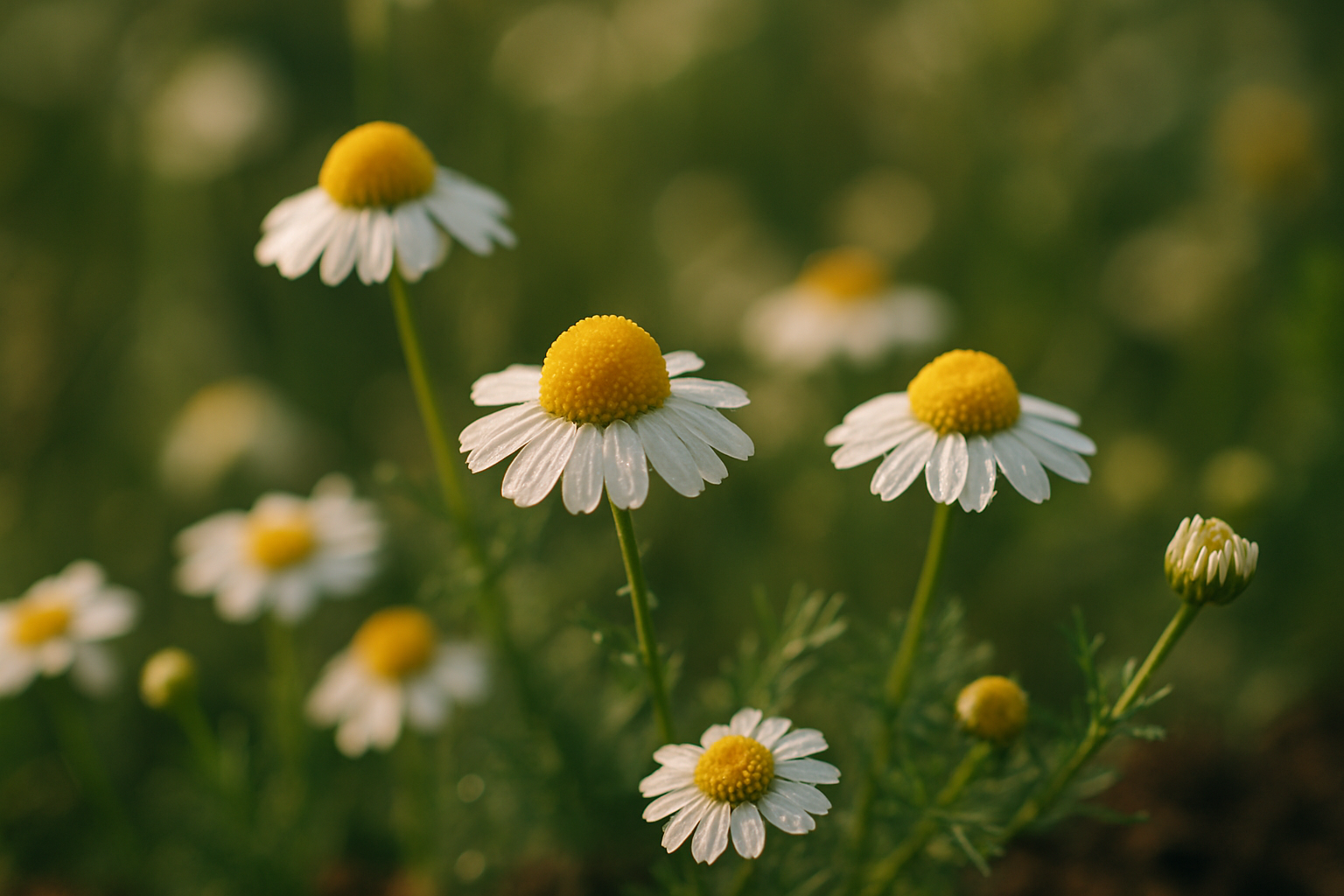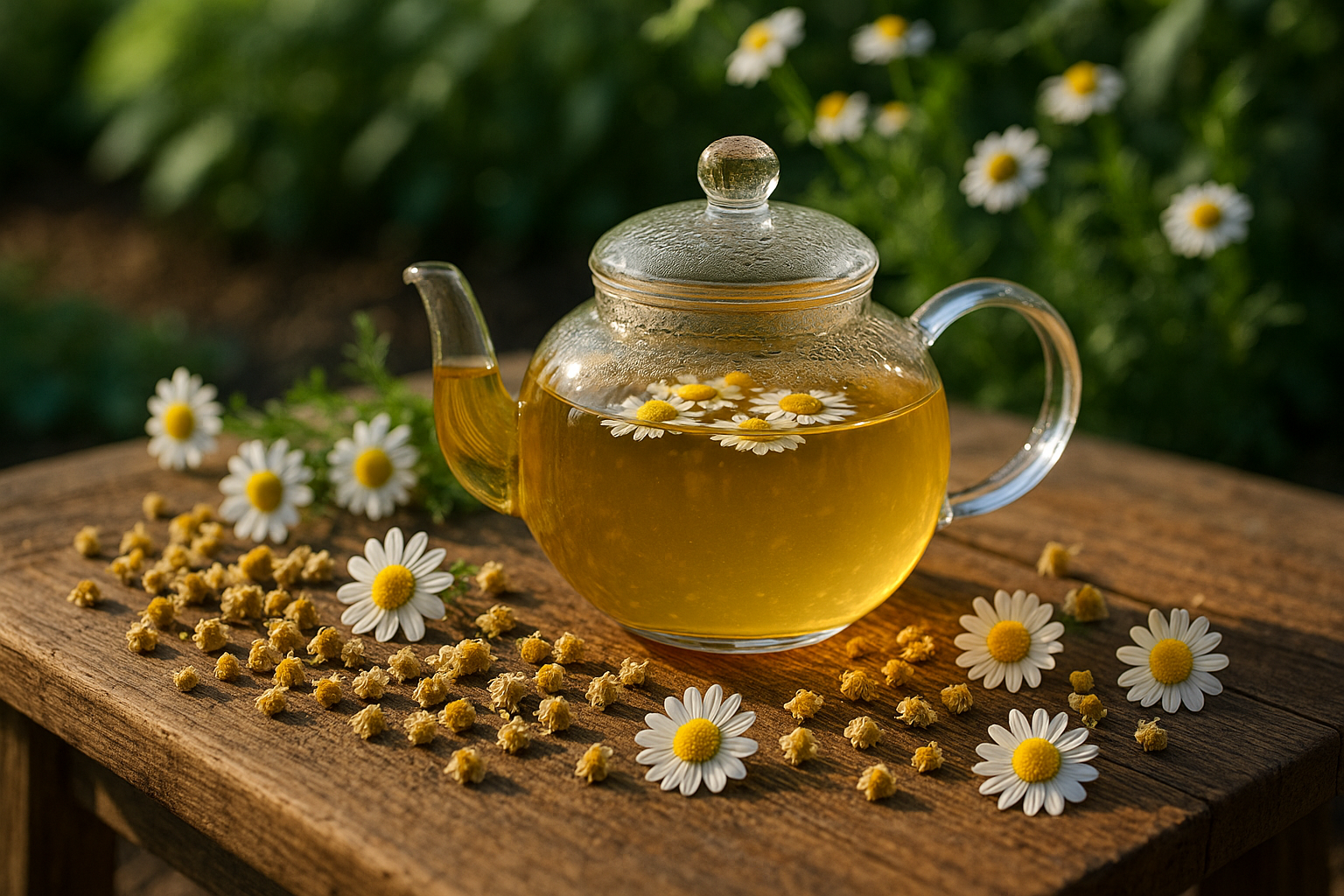Introduction to Chamomile Tea

Chamomile tea benefits have captured the interest of tea lovers and wellness enthusiasts for centuries. Made from the dried flowers of the chamomile plant—a daisy-like herb with delicate white petals and a gentle fragrance—this caffeine-free beverage has ancient roots. Historically, people have relied on chamomile not only for its soothing flavor but also for its role in herbal medicine, from calming anxious minds in Ancient Egypt to aiding restless sleepers in Greek and Roman times.
Today, chamomile tea remains a favorite, cherished for its comforting aroma and its potential to promote relaxation, support digestion, and soothe irritated skin. In this article, you’ll explore the science-backed benefits of chamomile tea and learn simple, effective ways to brew the perfect cup at home.
Key Health Benefits of Chamomile Tea
Chamomile tea has earned a reputation as a soothing, wellness-friendly beverage for good reason—multiple studies support its calming effects. One of the best-known benefits is improved sleep. Chamomile contains an antioxidant called apigenin, which binds to brain receptors and helps initiate sleep. Research, including small clinical trials, suggests that chamomile tea may modestly improve sleep quality, especially for those struggling with insomnia.
Similarly, its relaxation properties extend to reducing anxiety and stress. Some studies, mainly in supplement form, find chamomile can lower mild to moderate anxiety symptoms, though more research using tea specifically is needed.
Beyond calming nerves, chamomile is a gentle digestive aid. Traditional remedies use it for indigestion, gas, and upset stomachs, and a few scientific reviews back this up, although the evidence is more anecdotal than robust.
Chamomile may also provide immune support: its anti-inflammatory and antimicrobial compounds could help fend off minor colds, but this benefit hasn’t been definitively proven in humans.
For skin health, chamomile’s anti-inflammatory agents can soothe mild irritation; topical products and cooled chamomile tea compresses are sometimes used for conditions like eczema, although large-scale trials are lacking.
Another notable use is menstrual relief—a few small studies indicate that chamomile tea can decrease period pain and cramps, offering a gentle, natural option for women.
However, it’s important to remember that while benefits like better sleep, reduced anxiety, and digestive comfort are promising, scientific evidence ranges from strong (for sleep) to preliminary (for skin health and immunity). Chamomile tea is generally safe for most people, so enjoying a cup before bed, after a meal, or during stressful moments is a simple way to potentially support your overall well-being.
Is Chamomile Tea Good for Sleep?
Chamomile tea has long been cherished as a gentle and effective remedy for sleeplessness, thanks largely to its calming properties. Traditionally, cultures around the world have brewed chamomile before bed to promote relaxation, believing its delicate floral aroma and sweet, mild flavor help ease both body and mind.
Modern research offers some scientific backing, spotlighting an antioxidant called apigenin in chamomile that binds to certain brain receptors, gently encouraging drowsiness and reducing anxiety—key for falling and staying asleep.
For the best results, consider steeping a freshly brewed cup about 30 to 45 minutes before you plan to go to bed. This timing gives your body a chance to absorb chamomile’s calming compounds without causing nighttime bathroom trips. Choose high-quality, loose-leaf chamomile or reputable tea bags, and let the tea steep for at least five minutes to maximize its potency.
To create a peaceful bedtime ritual, pair your nightly cup with other relaxing habits—like dimming the lights, reading, or practicing gentle stretches. While everyone’s response is unique, many people find chamomile tea a simple, enjoyable step toward a better night’s sleep with minimal side effects, making it a natural choice for those seeking to improve sleep quality safely.
Potential Side Effects and Precautions
Chamomile is generally safe for most people, but it can cause allergic reactions, especially in those sensitive to plants like ragweed, daisies, or marigolds. Signs of an allergy include skin rashes, throat swelling, or difficulty breathing—if any of these occur, seek medical help immediately.
Chamomile may also interact with blood-thinning medications like warfarin, increasing the risk of bleeding, and it can amplify the effects of sedatives or alcohol. Pregnant or breastfeeding women should avoid chamomile, as some studies suggest it might trigger uterine contractions. Those with asthma or a history of severe allergies should use extra caution.
Always start with small amounts to see how your body reacts, and consult your doctor before adding chamomile to your routine, especially if you’re on medication or have existing health conditions. Moderation and responsible use are key—treat chamomile as you would any supplement, not a miracle cure.
How to Brew the Perfect Cup of Chamomile Tea

Brewing the perfect cup of chamomile tea is simple, and a few small tweaks can really bring out its soothing qualities. Start by boiling fresh, filtered water, then let it cool for about a minute to reach the ideal temperature of 200°F (just below boiling).
If you’re using loose chamomile flowers, scoop one heaping teaspoon per cup into a tea infuser or teapot. Alternatively, you can just pop a chamomile tea bag into your mug. Pour the hot water over the flowers or bag, cover, and let steep for 5–7 minutes—any longer can result in a slightly bitter taste.
Strain loose flowers or remove the tea bag, and you’ll have a gentle, golden brew. For added flavor, stir in a teaspoon of honey, a squeeze of lemon, or add a cinnamon stick.
If you’re feeling adventurous, try blending chamomile with dried lavender, mint, or a hint of ginger for a unique twist. On warmer days, chill your freshly brewed tea in the fridge and serve it over ice with a slice of orange or a sprig of mint for a refreshing iced chamomile tea.
Experiment with your favorite herbs or fruit slices to create custom blends that suit your mood, making chamomile tea an easy, relaxing ritual year-round.
Chamomile Tea in Everyday Life
Chamomile tea isn’t just a soothing bedtime drink—it’s a versatile addition to your daily routine. Try blending chamomile with a splash of lemon and honey for a refreshing iced tea, or add a few mint leaves and ginger for an uplifting twist.
For a comforting latte, steep chamomile tea strong, then mix with steamed milk and a sprinkle of cinnamon. In the kitchen, you can infuse chamomile tea into oatmeal, syrups, or even baked goods to add a gentle floral note.
Beyond drinking, cooled chamomile tea works well as a calming facial toner or in a DIY bath soak for relaxation. Make it part of your nighttime ritual for better sleep, or simply sip a cup during your afternoon break to unwind.
By exploring both culinary and topical uses, you’ll find it easy—and enjoyable—to incorporate chamomile tea into your everyday wellness habits.
Conclusion and Takeaways
Chamomile tea offers a gentle, natural way to relax, improve sleep, and soothe digestion, making it a smart addition to any wellness routine. To brew it safely, use fresh, quality chamomile flowers and steep them in hot—not boiling—water for about five minutes. Start with one cup daily to see how your body responds.
If you’re pregnant, taking medication, or have allergies, be sure to consult your healthcare provider first to ensure chamomile is right for you. Incorporating a calming cup of chamomile into your evening routine helps create a comforting ritual you’ll look forward to, supporting your overall well-being with every sip.
